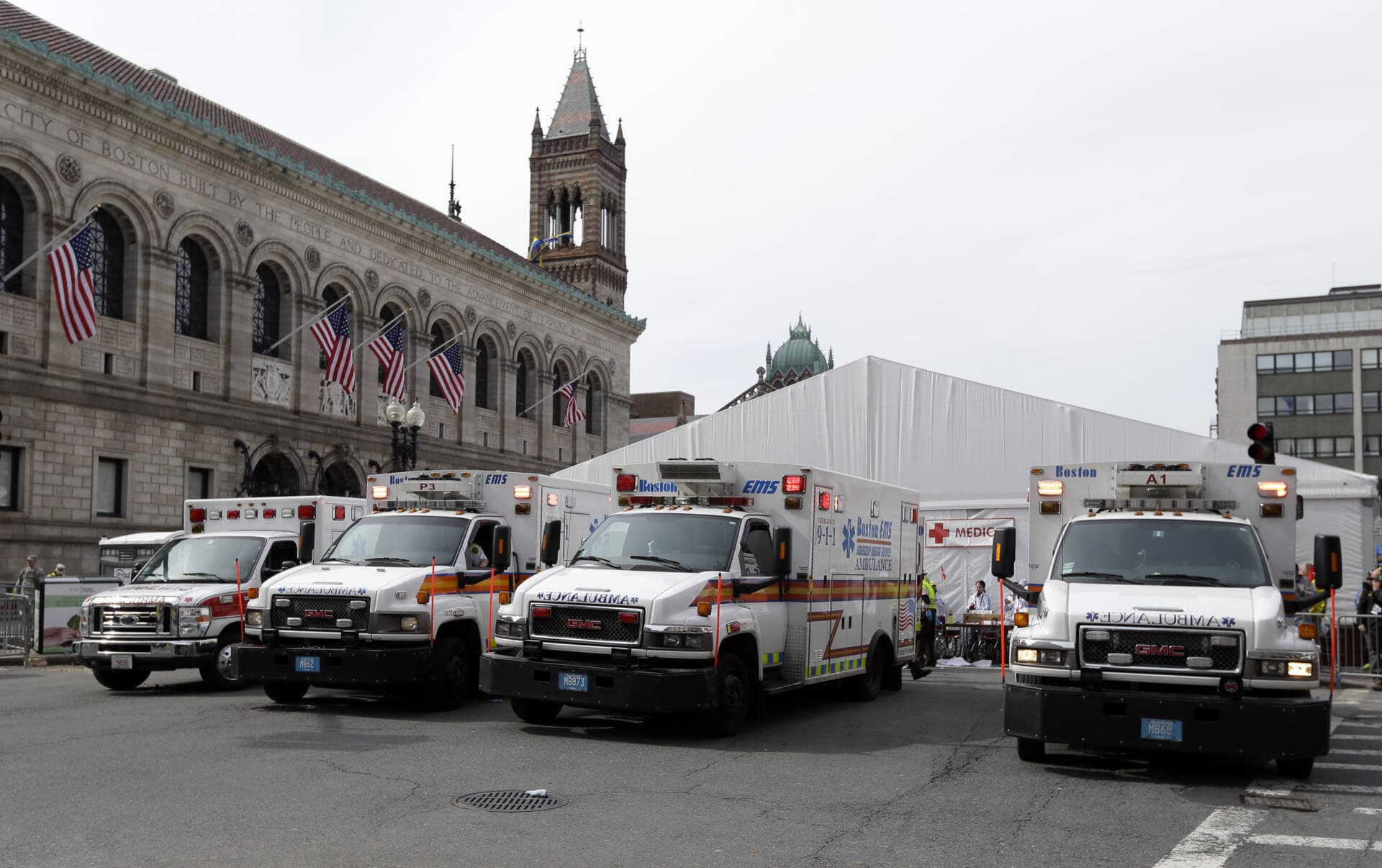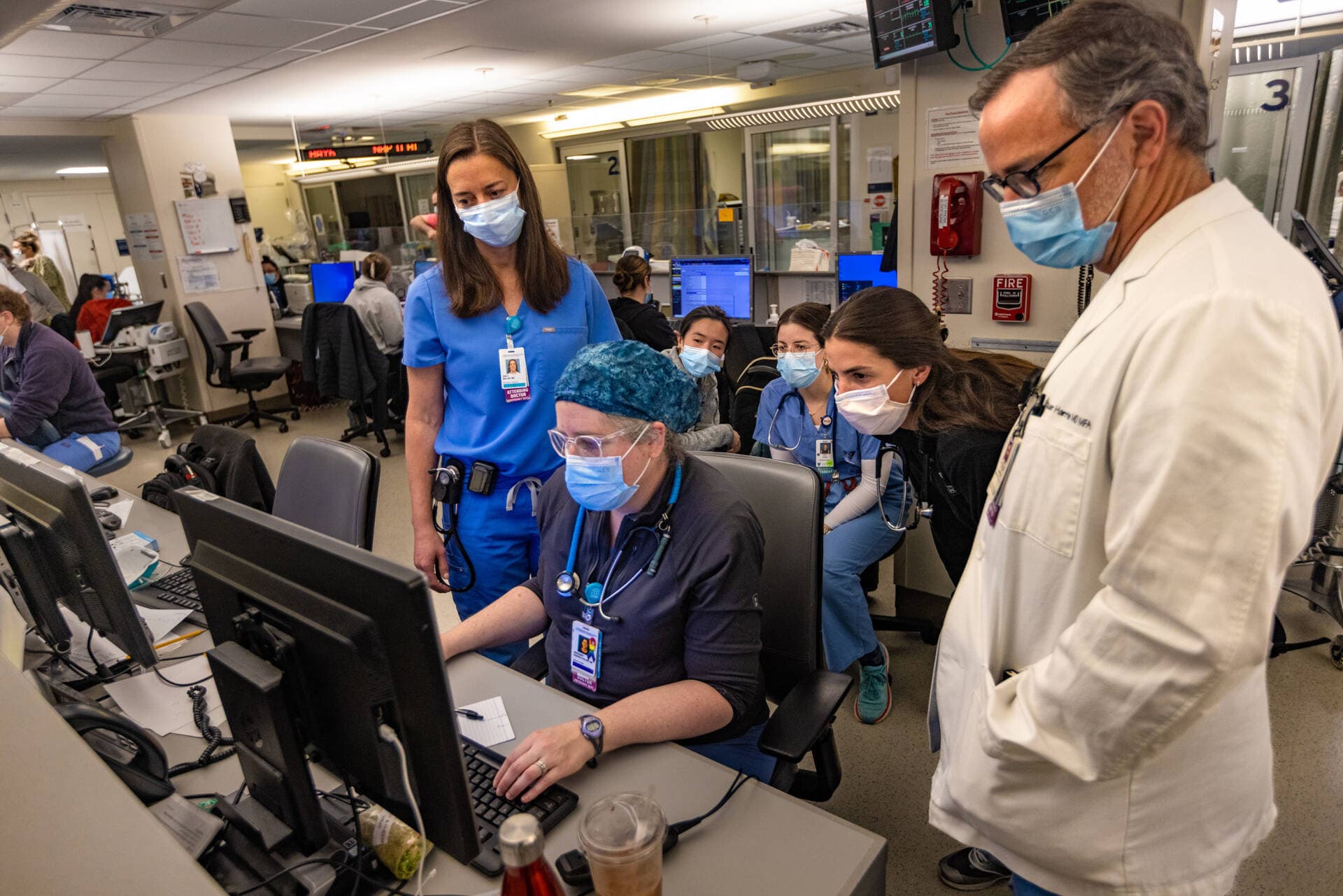
Boston hospitals took quick action after the marathon bombings. Could they do it again?
When hundreds of people were injured in the Boston Marathon bombings a decade ago, the city’s hospitals were ready. Doctors and nurses rapidly mobilized to treat the critically wounded, and their quick action to save lives became a model for medical professionals around the world.
Despite that experience, and all the emergency response training in the 10 years that followed, contending with a disaster now would be more challenging than it was then.
Hospitals are more crowded with sicker patients — and short on experienced front-line staff. Patients are languishing in hallways as they wait to be admitted.
There is simply less space to put all the patients coming in the doors.
"In Boston, yes, we are ready for a mass casualty," said Meg Femino, the recently retired vice president of emergency management at Beth Israel Lahey Health. "Is it going to be more difficult? One hundred percent it will be, because our hospitals are jammed at 100% right now."
Medical teams responded immediately when two bombs exploded near the marathon finish line on April 15, 2013. Crews from Boston Emergency Medical Services, including Chief James Hooley, were already stationed there.
Four minutes after the explosions, Hooley and his team issued a warning that was broadcast on a special radio network connecting emergency departments across the city. This early warning allowed hospital staff to start moving patients out of their ERs and make space for the bombing victims.
Within half an hour, dozens of critically injured patients showed up at hospitals. They were bleeding from shrapnel wounds. Many had leg injuries so severe they would require amputations.
At Massachusetts General Hospital, doctors and nurses triaged patients outside, in a parking garage where the ambulances pulled up, then rushed them inside for blood transfusions and surgery.
Advertisement
Mass General and other hospitals ended up with more doctors and nurses than they needed that day, because so many hurried to work to help on their day off.
"It never felt frantic," said Dr. Paul Biddinger, who led Mass General’s emergency department response that day. "It didn't feel fully calm either. I would say it felt tense."

The bombings killed three people on the scene, and wounded 281. Ambulance crews carried 118 patients, distributing them among several hospitals to make sure no one emergency room was overwhelmed.
Everyone who made it to a hospital survived that day.
Emergency response experts say some fortunate circumstances helped prevent an even bigger tragedy. Boston is dense with big hospitals. There were six Level 1 trauma centers within a couple miles of the blast site, staffed around-the-clock with experts in emergency surgery.
And the timing of the attack — just before 3 p.m. on the Patriots' Day holiday — meant that hospitals were less busy than usual, ambulances encountered minimal street traffic and a new shift of hospital staff reported to work around the same time that the bombing victims arrived.
Boston’s hospitals have trained for disasters for decades, honing their plans after 9/11, and practicing them during the 2004 Democratic National Convention.
"A lot of people say it was luck," said Femino, who spent 16 years in emergency management at Beth Israel Lahey Health and Beth Israel Deaconess Medical Center. "But sometimes you make your own luck, and we did. Because we had years of working together."
Femino ran, on average, more than one drill a month, training for a range of potential threats from hurricanes to chemical spills to infant abductions to mass shootings.
On Marathon Monday 2013, she said, “Everybody who came in said they knew exactly what to do because they had practiced it so much before.”
A decade later, hospitals look different. Now, any ordinary day can feel almost like an emergency. Hospitals are more crowded as they treat an aging population and people who are sick after delaying care over the past three years.
The COVID pandemic battered hospitals, first with surges of sick patients, then increasing burnout and exhaustion among health care workers. Many have chosen to leave their jobs.
Staffing shortages in nursing homes and rehabilitation facilities often force hospitals to delay discharging patients, causing further backups.
The reality is that responding to an emergency — especially an event that involves hundreds of patients — is much harder than it used to be.
"If you imagine a large amount of patients coming in from a mass casualty on top of what we're caring for, it's a disaster upon a disaster," said Dr. Eric Goralnick, an emergency medicine physician at Brigham and Women’s Hospital. "Not only would there be challenges in caring for that influx of patients, but there'd be challenges caring for the patients that we [already] have."
Many emergency departments across the country are so full that they’ve resorted to treating patients in noisy, cramped hallways every day.
“It's hard to feel like we're providing quality care when everything is so overcrowded and overwhelmed."
Dr. Emily Miller
In this environment, patients can suffer from delays in receiving medications or getting a proper diagnosis, Goralnick said.
And it’s a burden on nurses and doctors, too.
"There's just now no physical space to put everybody," said Dr. Emily Miller, an attending physician in the emergency department at Mass General. "They're being smushed into tiny little spots in the hallway, and it's total chaos around them constantly. It's hard to feel like we're providing quality care when everything is so overcrowded and overwhelmed."
Miller said the health care system sometimes feels like it’s on the brink of failure.
"We're pushing, we're pushing, we're pushing, we're doing everything we can, and we're hanging in there," she said. "But it sort of feels like we're hanging on by our fingernails a lot of the time."

This, emergency response experts say, is why preparing for disasters now requires more investment, planning and coordination — across Boston and the region.
"Drills do help," said Dr. Kevin Ryan, medical director for emergency management at Boston Medical Center. "As you start to go through them, you start to think of the ‘what ifs.’ So when that ‘what if’ happens during a real event, it's a question that you've already thought about."
Hospital leaders also need to get creative to find new places to put patients during a surge. That might mean treating patients in waiting rooms and procedure rooms. Single patient rooms could become doubles.
Mass General has designed a "buffer zone": a quiet corridor near the emergency room that's lined with electrical outlets. If the ER needs to be cleared out in a hurry, staff can wheel 15 patients to this hallway and plug their monitors into the wall, said Biddinger, the director of Mass General's Center for Disaster Medicine.
It's far from ideal, but it would help staff manage a sudden emergency.
Hospital leaders in Boston and beyond still turn to the lessons they learned from the marathon bombings. They've added supplies to their ambulance bays and emergency departments, for example, from laptop computers that can register patients quickly, to extra tubing for blood transfusions.
These and other adjustments may help hospitals be ready for another emergency, despite the added challenges they face today.
The pandemic slowed some routine emergency response training as health care workers dealt with the more immediate threat of COVID. But the pandemic also forced hospitals to work together to navigate an unfamiliar crisis. That experience could be essential for battling new threats in the future.
"It takes practice, it takes time," Biddinger said. "But I think across many of the hospitals, there is an ongoing commitment to make sure we're still ready, ten years later."
This segment aired on April 11, 2023.
